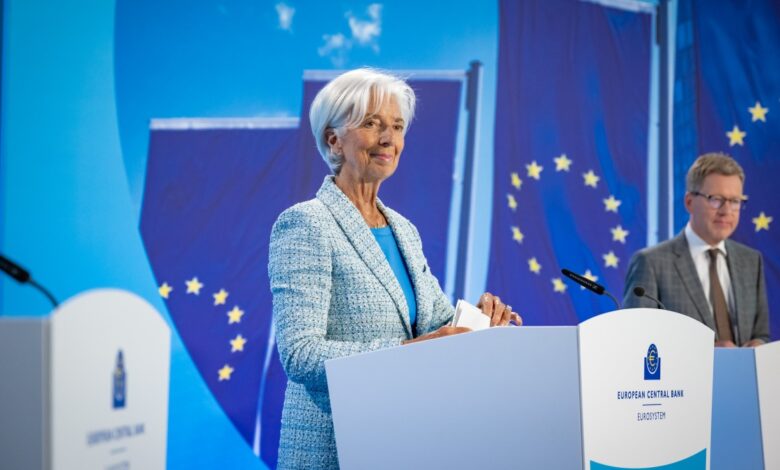European Central Bank Follows Canada, Cuts Interest Rates to 3.75%
The ECB kept their cards close to their vest regarding future rate cuts, stating they will adopt a data-dependent, meeting-by-meeting approach to future rate decisions.

The European Central Bank (ECB) has reduced its main interest rate for the first time in five years, from a historic high of 4% to 3.75%. This follows the Bank of Canada decision, reflecting a broader trend among central banks to adjust rates in response to changing economic conditions.
ECB President Christine Lagarde emphasized that the rate cut is a response to the significant inflation progress. Inflation has been a critical concern for the Eurozone.
Inflation Outlook
Lagarde noted that the inflation outlook has improved considerably, with inflation expected to average 2.5% in 2024 and 2.2% in 2025. Despite this progress, she cautioned that inflation is likely to remain above the ECB’s 2% target “well into next year.”
The European Central Bank aims to keep its interest rate policy sufficiently restrictive to continue driving inflation down to its target. “We are not pre-committing to a particular rate path,” Lagarde stated, highlighting the bank’s cautious approach.
Economic Stimulus and Future Rate Cuts
The rate cut is anticipated to stimulate economic activity by making borrowing cheaper for consumers and businesses. However, the ECB’s decision comes amid economic uncertainties and geopolitical tensions from the ongoing conflicts in Ukraine and the Middle East.
These factors could pose risks to economic growth, which the ECB is monitoring closely.
The European Central Bank’s Governing Council will adopt a data-dependent and meeting-by-meeting approach to future rate decisions. This means the bank will assess incoming economic and financial data before deciding on further rate cuts.
While some economists predict additional rate cuts later this year, the ECB has not committed to a specific timeline.
Emphasizing the need for flexibility in policy decisions, Lagarde added:
“The risks to economic growth are balanced in the near term but remain tilted to the downside over the medium term.”
Investment strategist, Lindsay James from Quilter Investors, who views the rate cut as a necessary step to revive the Eurozone economy, stated:
“The ECB has stolen a march on the Bank of England and the Federal Reserve – who are both potentially still a few months away from cutting – and will breathe life into an economy that desperately needs some form of stimulus.”
The cut is seen as a relief for both consumers and businesses facing high borrowing costs.
Global Trends and Future Outlook
The ECB interest rates approach mirrors actions taken by Canada, Sweden and Switzerland, which have also reduced rates recently. The ECB’s broader strategy includes adjusting its asset purchase programs to manage liquidity and support monetary policy.
Moving forward, the ECB will continue reducing its holdings under the pandemic emergency purchase programme (PEPP) and the asset purchase programme (APP) in a measured manner.
Overall, the ECB rate cut is a pivotal step in its ongoing efforts to manage inflation and stimulate economic growth. However, the path ahead remains uncertain, with the bank prepared to adjust its policies as needed to respond to evolving economic conditions.
Read Next: Why the Housing Market Could Influence Swing State Voters in the 2024 Election
Join the Discussion in the WVC Facebook Investor Group
Have a Stock Tip or New Story Suggestion? Email us at Invest@WealthyVC.com




